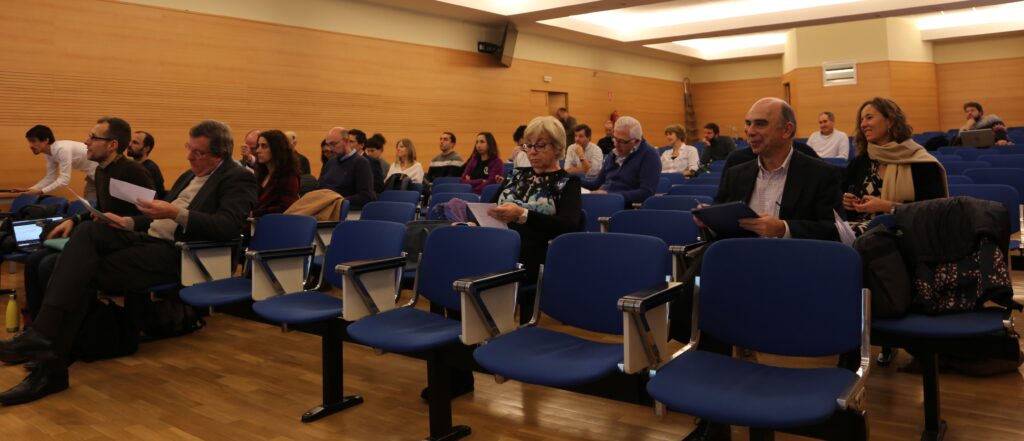
Last November 29th, 2023 the presentation of the outcomes of the AgrosceNa-Up Project was held in the Assembly Hall of the School of Agricultural, Food and Biosystems Engineering (ETSIAAB-UPM), with the contribution of recognized national and international experts, revealing advances in the understanding of nitrogen (N) fluxes in agricultural systems and proposing management scenarios to reduce losses of this key element in agriculture.
The AgrosceNa-Up project, funded by the State Plan for Scientific and Technical Research and Innovation (2019) ( PID2019-107972RB-I00), evaluation of agricultural management scenarios at different scales for sustainable Mediterranean cropping systems by reducing N losses, led by Luis Lassaletta and Alberto Sanz-Cobeña, aimed at the comprehensive diagnosis of Spanish agricultural systems and to develop improvement strategies that reduce nitrogen losses. Seven management scenarios with potential to reduce N losses at regional and national level were identified. These scenarios include the use of organic fertilizers, the incorporation of fertilizer into the soil, the use of inhibitors and other technologies, irrigation management (fertigation), crop and soil management, the selection of specially adapted crop varieties and the elimination of urea.

The great diversity of Spanish agricultural systems, either in terms of potential environmental impacts, efficiency or productivity, makes it necessary that adaptation and sustainable management strategies must be adapted to each specific territory, therefore, different spatial and system scales have been used in order to respond to the heterogeneity present in agricultural systems. Antonio Vallejo (CEIGRAM) highlighted the importance of the wide scientific output derived from this project and other interconnected projects, as well as the transfer of knowledge, both through the recruitment of young researchers for the development of this research output, and through direct contact with various relevant actors in the sector (public administration, researchers and international networks focused on nitrogen, farmers and ranchers, etc.).
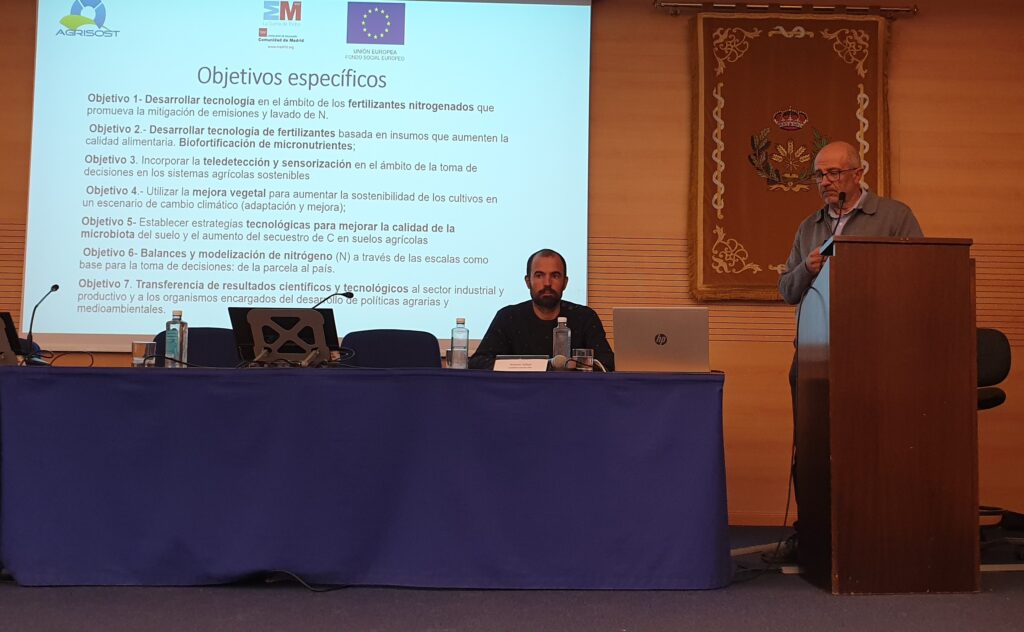
The current context of climate change foresees higher impacts on yields for the countries of the Mediterranean basin than for their northern European neighbours. To ensure sufficient food production in this scenario of vulnerability, it is necessary to adapt to the new conditions. Nitrogen is a key element for maintaining or increasing crop productivity, and requires sustainable management aimed at preventing overfertilization to avoid contamination of water bodies (nitrates) and air (ammonia) and reducing greenhouse gas emissions (nitrous oxide). Miguel Quemada (CEIGRAM), for his part, focused on remote sensing and the role of technology in fertilization adapted to the crop’s requirements to reduce production costs on the one hand and minimize environmental impact on the other.
Most of the fertilizers used in the Iberian Peninsula have a synthetic origin, and yet, in Spain we have an important livestock population that generates nitrogen that sometimes is not being properly managed and can end up polluting bodies of water or air. Benjamín Sánchez Gimeno (INIA-CSIC), focusing his presentation on Murcia (region in Southeastern Spain), again placed the spotlight on the reconnection between crops and livestock, as well as on the increase of agriculture based on local organic inputs and reduction of overfertilization, especially in some irrigated areas to reduce the use of fertilizers and nitrogen losses, without a significant impact on yields.
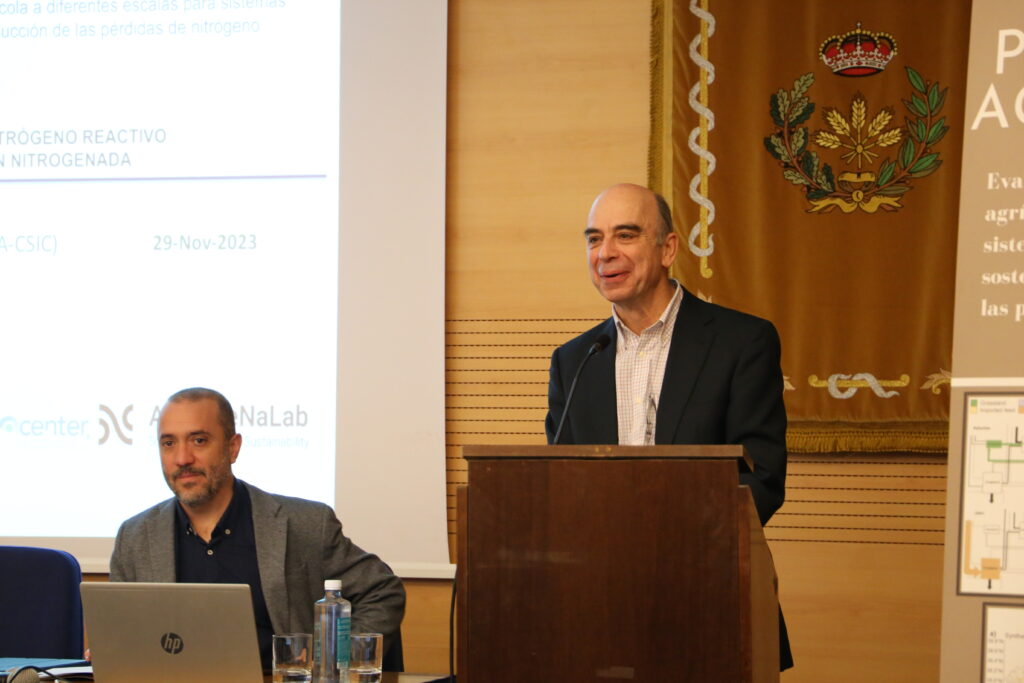
In the AgrosceNa-Up Project, the co-creation activities have been given great attention, in collaboration with relevant actors in the sector (fertilizer companies, farmers and ranchers groups, public institutions, environmental NGOs and academia) in order to analyze the main barriers and limitations in the implementation of the different management scenarios aimed at reducing N loss, and possible actions have been jointly designed to facilitate their implementation. On the November 29th event, we had the opportunity to listen to two colloquiums with the attendance of Javier Brañas (Fertiberia), Ignasi Salaet (Fertinagro Biotech), Javier Alejandre and David Erice (Unión de Pequeños Agricultores y Ganaderos- UPA), Rosa Gallart (Interporc), Celsa Peiteado (WWF), Alejandro Benito (IMIDRA) and Carmen González Murua (UPV/EHU), representing the different parties that were present in the participatory process for the definition of a roadmap for sustainable nitrogen fertilization, in which aspects such as the need for guidance and training for farmers, the possibilities of designing incentive policies as opposed to punitive approaches, the need to reconnect livestock and agriculture to help the circular management of both or the importance of healthy soil were highlighted.
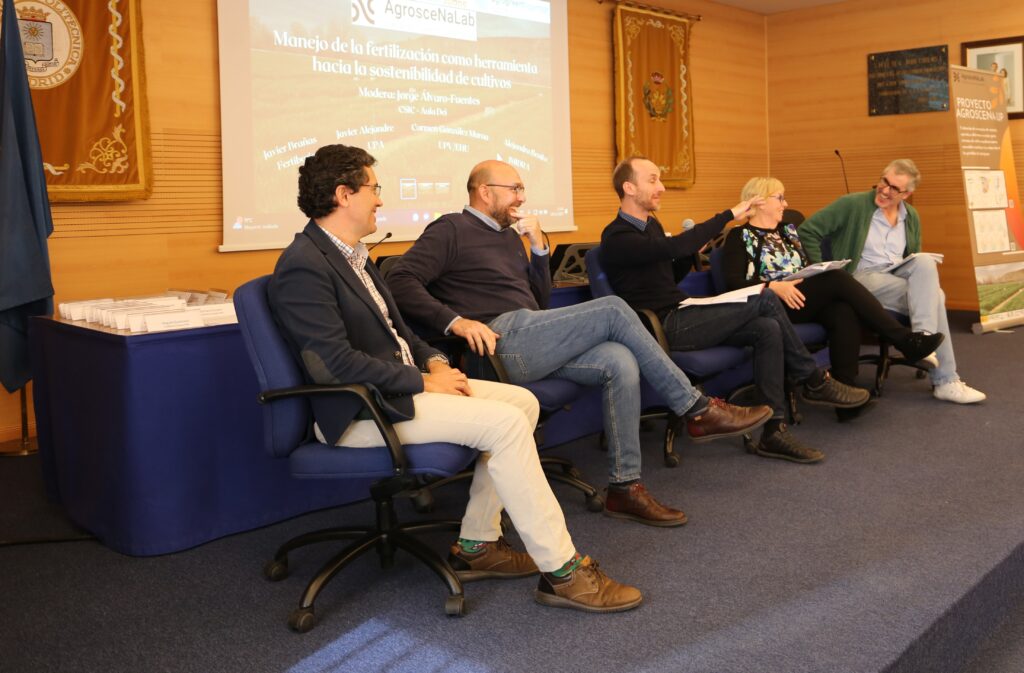

The proposals of the AgrosceNa-Up Project align with the European Green Deal and the Farm to Fork Strategy. While recognizing that there is still a long way to go, the effort that has led to the reduction of a certain amount of nitrogen surplus in recent years has also been emphasized, with an account of the good agricultural practices that have driven this reduction. Hans van Grinsven (Netherlands Environmental Assessment Agency – PBL) focused his presentation on European nitrogen regulations and the possible keys to an efficient transition towards a sustainable future.
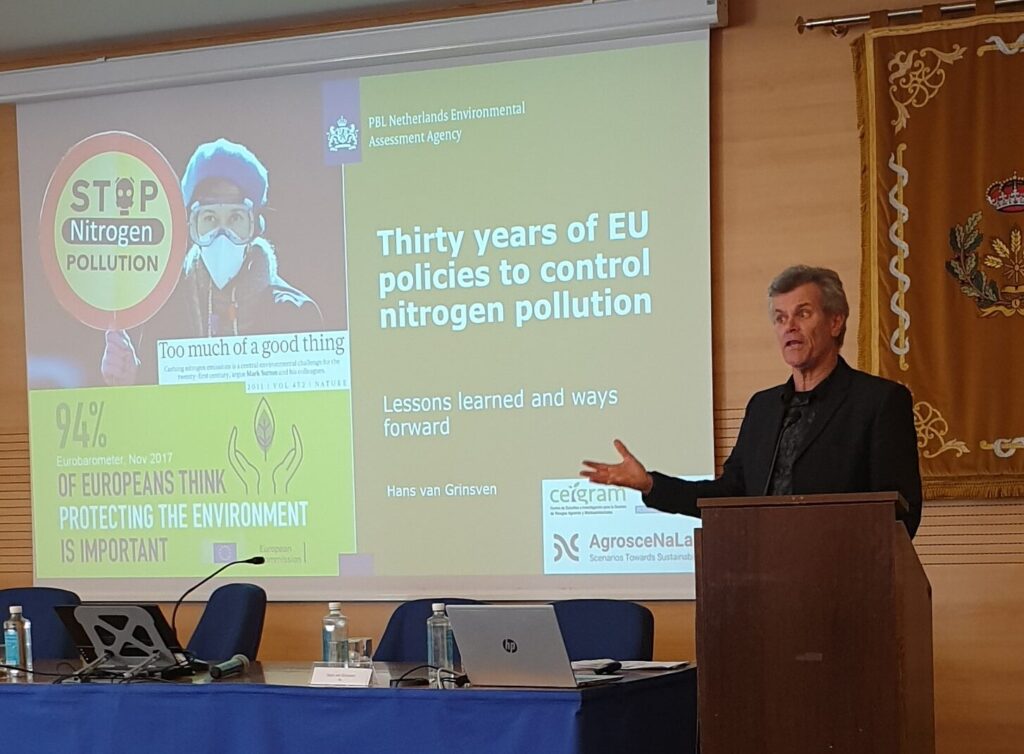
Hans Van Grinsven giving his lecture
To close the conference, we were honoured with the presence of the Secretary General of Agriculture and Food, Fernando Miranda (currently Secretary General of Agricultural Resources and Food Safety), from the Ministry of Agriculture, Fisheries and Food (MAPA). In his speech he highlighted the role of the Ministry in the development and implementation of regulations limiting the use of fertilizers, as well as the ways to apply them. He also wanted to emphasize the usefulness of the Digital Booklet to plan reduction scenarios with knowledge of the reality of our agricultural systems, so that the decisions taken minimize the economic and social impacts on farmers, on the road to a more environmentally sustainable agriculture that maintains profitability and yields.
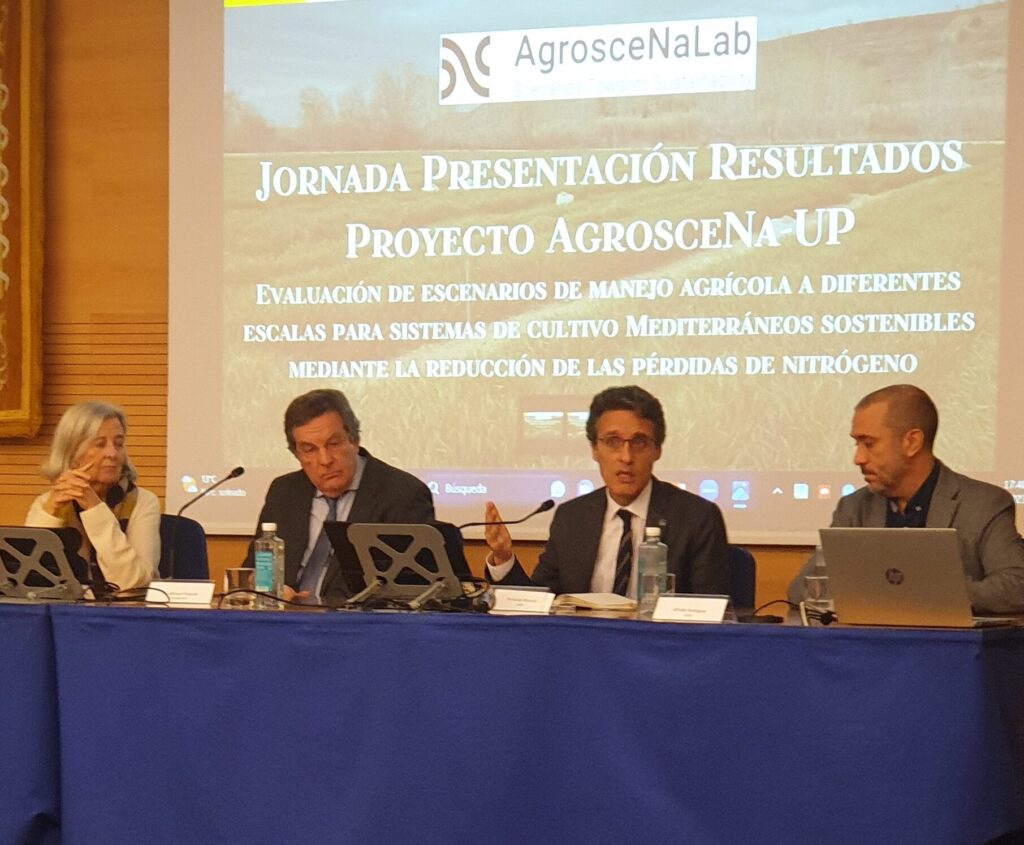
AgrosceNa-Up is coming to an end as a project, but the people who have been part of it and the knowledge acquired will continue to search for efficient ways to manage nitrogen in pursuit of sustainability that will guarantee safe, sufficient and appropriate food, minimizing environmental impacts and ensuring that the conditions that allow current yields to be obtained continue to be maintained or improved. Spain is in a favourable position to meet its environmental commitments and ensure the long-term viability of its agricultural systems. The closure of the AgrosceNa-Up Project marks an important milestone on the road to a more sustainable and resilient agriculture in the Mediterranean region; the extensive scientific output of the project can be found at https://agroscenalab.com/en/scientific-activity/

